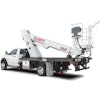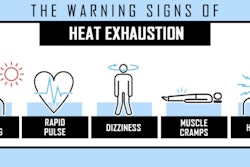
As most would agree, the construction industry continues to fare well. Based on what we hear from our clients and data from our 42nd annual Wells Fargo Construction Industry Forecast, we expect to see this trend continue. Our forecast generates an Optimism Quotient (OQ) each year, which is a measurement of the industry’s expected activity for the year ahead. With the 2018 OQ at a 20-year high of 133, we can state with some conviction that the participants who spoke to us feel that 2018 is going to be a very good year.
In today’s market, contractors have to make a significant investment in machinery and equipment, and acquiring equipment can be done in several ways. Common questions include: “Do I have enough work to justify buying it?” and “Should I just rent rather than make a long-term investment in the equipment?” Distributors also have to make decisions, including whether their focus will be more on sales or rentals (and is there a need for a dedicated rental fleet), and how much inventory is needed. These are difficult decisions when the economy is strong and the availability of new equipment is not as easy to get as when things are slower. It is definitely not an exact science and can keep a business owner up at night.
Expect more rental
Our most recent forecast told us that 65% of distributors and rental companies expect to rent more equipment to contractors than the prior year. Of the contractors that we surveyed, 33% expect to increase their rental activity. One caveat that we learned from the industry forecast, though, shows that even a small increase in rental prices could push contractors to purchase the equipment rather than rent.
This is something we have seen in the last few years as contractors are more bullish on owning equipment when they have a stronger backlog of jobs and more long-term confidence in their local economy – a trend we are seeing now in many areas. While equipment rental has been around for many decades, after the great recession this trend increased significantly due to a drop in equipment values, little work backlog, and a lack of confidence in the economy. Distributors who had previously utilized a rent-to-sell model, were now in a position where they needed to decide if they wanted to adjust their business model to include rent-to-rent with fewer sales occurring. For a distributor that does not have that experience, this can be scary as rental companies run their operations far differently from manufacturer-based distributors. Large investments in personnel, systems, and inventory are required to adjust to this model, and some have been more successful than others in these endeavors. Contractors realized that they could get the equipment they needed at a reasonable cost, have greater flexibility (which includes the ability to return it at any time), little or no maintenance costs, and no long-term risk of ownership. This has effectively shifted the risk of ownership to the distributors. Contractors have been able to get newer/late model equipment to use on their jobs without having to buy it.
Bigger fleets
Another key insight from our 2018 forecast is that 55% of our surveyed distributors and rental companies said they will increase the size of their rental fleets. This additional investment comes at a cost with equipment prices rising and interest rates continuing to go up. Many manufacturers have passed on the increased price of steel through invoice surcharges. At the same time, labor costs are rising due to a shortage of qualified technicians.
In our conversations with manufacturers and distributors, we hear the delivery time for new orders is delayed as much as six months. This is due to several factors – record orders coming in, not having a large enough workforce, and not having enough space to increase production. Their suppliers are feeling similar pain and component availability is strained.
The Federal Reserve has continued to increase interest rates based on historically low unemployment and an economy that continues to hum along, with many forecasts projecting 2018 GDP to be anywhere from 3-5%. Our own Wells Fargo Securities forecast is for 2018 GDP growth to be approximately 3%. From late 2015, the Fed has increased its benchmark rate seven times, which then forces lenders to increase their lending rates to their customers. Add all of these factors together, and it increases the purchasing and carrying cost for each unit and can cut into margins very quickly.
What about rates?
So that begs a question – can distributors and rental companies increase rental rates to cover these higher costs? Every CFO out there will see these increases and be reaching out to the sales side of the business, advising them of these higher costs and the need to recoup them in their rental rates. The sales side will then need to make a decision – do I keep the rates where they are or try to pass along the increase? Remember – our survey told us that even a small price increase may push contractors to purchase rather than rent. And most contractors will utilize two or three sources for renting their equipment – they will likely call the guy down the street to see what his rate will be. As you can see, a tricky situation to be sure, and not for the faint of heart.




















